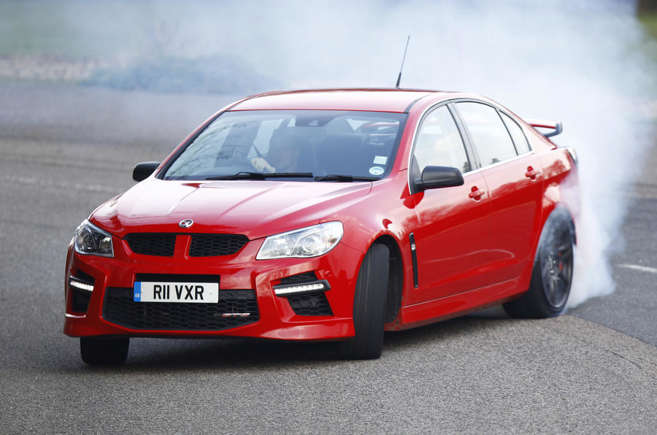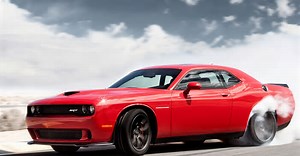
The mighty V8 is falling.©Dodge
Even the Mercedes-AMG C63 is moving to a hybrid four-cylinder engine. With more car makers choosing small capacity engines, we look at the best V8s, an engine configuration that has powered many of our favourite models over the decades. Here’s our pick of the V8 greats in alphabetical order:
Aston Martin V8 Vantage
Aston Martin’s 5.3-liter V8 engine started life in the DBS in 1968, linking this new V8 era with the previous models that used a straight-six engine. It started life with 315bhp, enough to see the DBS from 0-60mph in 6.0 seconds, but it soon grew to 438bhp in the V8 Vantage that boasted a 170mph top speed. Unusually, the engine started life with fuel injection, but switched to carburetors in mid-1973.
The V8 also saw service in the wedge Lagonda and it was expanded to 6.3 liters in some Virage models. The final hurrah came in the Works-upgraded V600, which was a 600 hp, 600LB-FT supercharged version that had a claimed top speed of 200mph and 0-60mph in 4.5 seconds. Aston built around 4500 cars with this V8 engine, including the Bulldog concept hypercar with a mid-mounted V8.
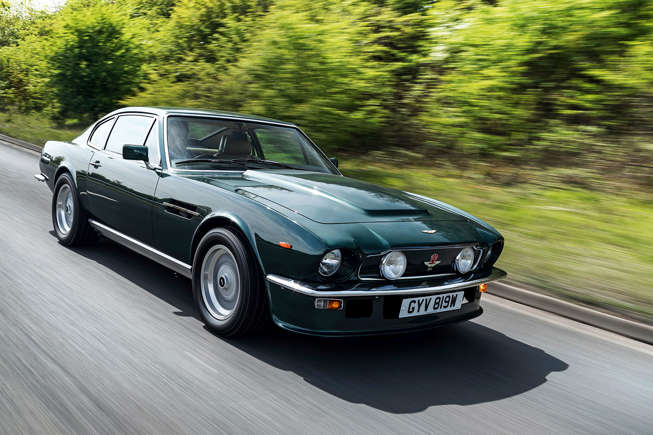
Audi R8
The Audi R8 was a sensation when it arrived in 2007, largely because it gave the Porsche 911 a bloody nose when few had ever managed to land a blow on Stuttgart’s finest. So much of the original R8’s appeal stemmed from the normally aspirated 4.2-liter V8 engine borrowed from the RS4. With 420 hp and a manual gearbox as standard, it revved, sounded and went brilliantly.
The V10 versions of the R8 may have been quicker, but the 4163cc V8 was still good for 0-62mph in 4.6 seconds and 187mph. More importantly, this all-aluminium 32-valve engine always felt eager thanks to variable valve timing and many felt its lightness made the R8 a nimbler car than its V10 siblings.
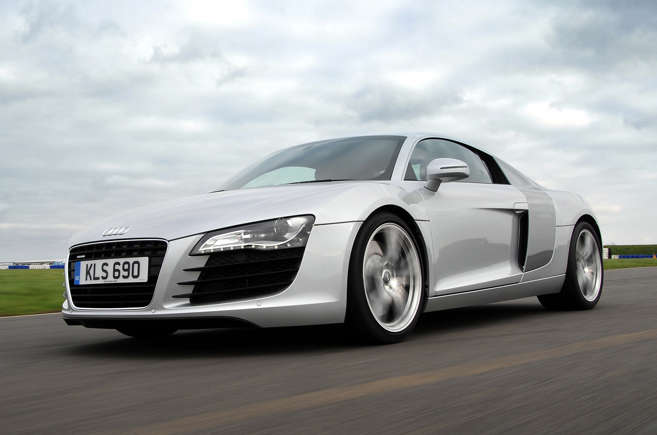
Bentley Arnage
Ts, the V8 that went on to power the Arnage is an object lesson in engineering refinement and evolution. While it started with a merely adequate output of less than 200bhp, by the time the Arnage T was launched in 2002 it had inflated to 456 hp thanks to twin turbochargers. This made it the most powerful Bentley built at the time.
Key to this engine’s longevity was its over-engineering from the outset. This made it capable of much more in later life, with the Arnage T capable of 0-60mph in 5.5 seconds. This was bettered with the final version of the 6.75-liter V8 used in the Mulsanne Speed, which offered 537 hp, 190mph and 0-60mph in 4.8 seconds. Not bad for a 60-year old design. This V8 engine died along with the Mulsanne in 2020
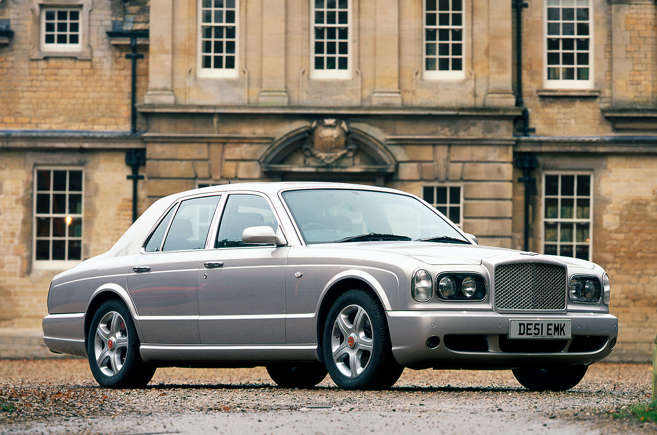
BMW M5otor,
the BMW M5 is now back with a V8 after this design of engine first made its appearance in the E39 M5. It was an instant hit thanks to the 5.0-liter V8’s 400 hp punch that could see it from 0-60mph in 5.3 seconds on to a limited 155mph, or considerably more if derestricted.
The 4941cc all-alloy 32-valve V8 was a technical show of strength from BMW, featuring drive by wire throttles and individual throttle bodies. Known as the S62, the engine was also the first to have double VANOS variable valve timing, making the most advanced road car engine BMW had produced up to that point.
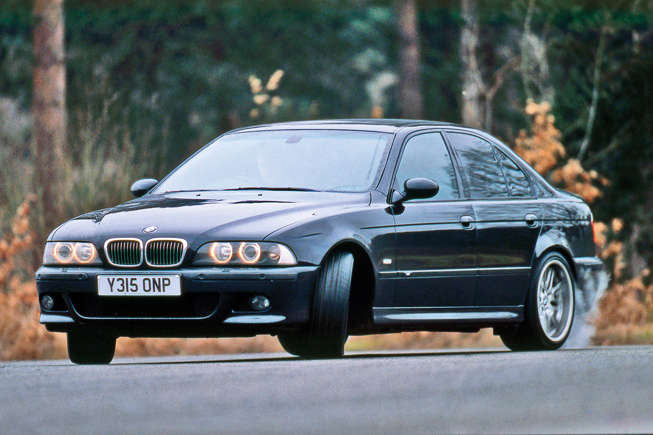
Cadillac CTS-
ury of a Cadillac with huge V8 power resulted in the CTS-V line of cars. All used the same simple two valve per cylinder V8 as the Corvette, starting out with a 400 hp 5.7-liter unit in 2004. This grew over time to a supercharged 6.2-liter motor with 640 hp to give the BMW M5 and Mercedes-AMG E63 a run for their money.
While some may have scoffed at this aluminium V8 engine’s simple design, it has proved enduringly strong and reliable. Built in GM’s Mexico plant, it has also been used to power several other fast GM cars and is even available to buy separately to fit into hot rods, kits and race cars.
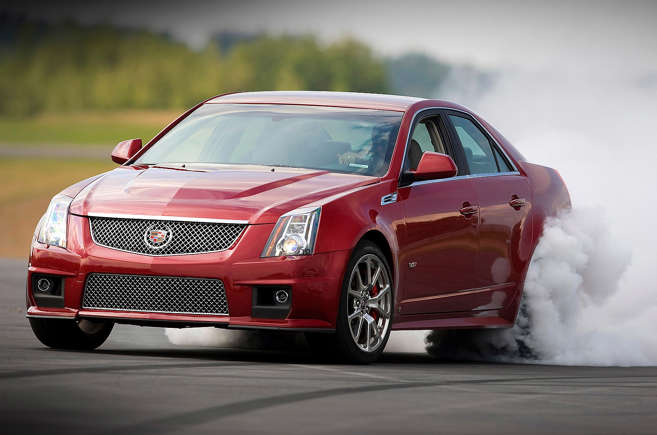
Chevrolet Corvette
choice of straight-six and V8 engines, but it’s the small block V8 that has gone to underpin Chevrolet’s sports car dynasty. There have also been big block models, with engines as large as 7.0 liters, yet the smaller unit is the one most enthusiasts want and has a history stretching from 1954 to 2003. This makes it one of the longest running production engines ever and more than 100 million of all types were made.
Among the more unusual versions of the Corvette’s small block V8 is the LT5 engine that used a double overhead camshaft design by Lotus for the ZR-1 model (pictured). This four valve per cylinder engine provided 385 hp to begin with, increasing to 405 hp. It was in production between 1990 and 1995, with 6939 units made for Corvette and some were also made for the Lotus Elise GT1 race car.
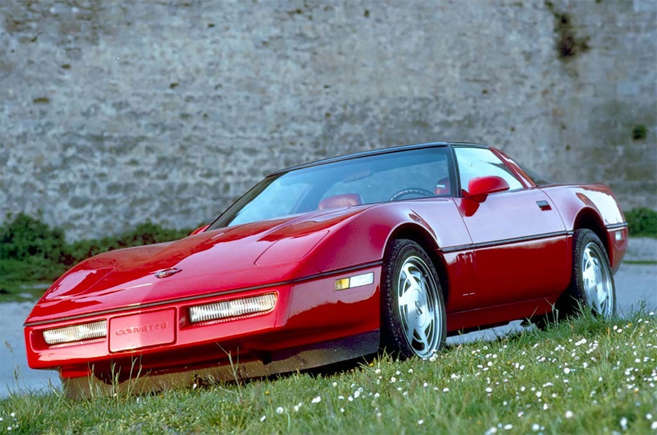
Daimler SP250
The Daimler SP250 ‘Dart’ was a sales flop, with just 2650 sold in five years between 1959 and 1964. Yet if you could look beyond the styling, there lay a superb, compact V8 engine. Designed by Edward Turner (1901-1973), who was responsible for some of Triumph’s best motorcycle engines, the 2548cc iron block V8 used a single central camshaft and short pushrods. It produced 140 hp, giving the SP250 a decent enough turn of speed for some police forces to order them as high speed patrol cars.
If Daimler had perhaps fitted the larger 4561cc V8 with 220 hp from the Majestic Major, it might have found the US sales it craved for the SP250. All was not lost, though, as Jaguar bought Daimler and used the small V8 in a Mk2 sedan shell to create the V8-250 that many reckoned handled better than the straight-six model with a Jag badge.
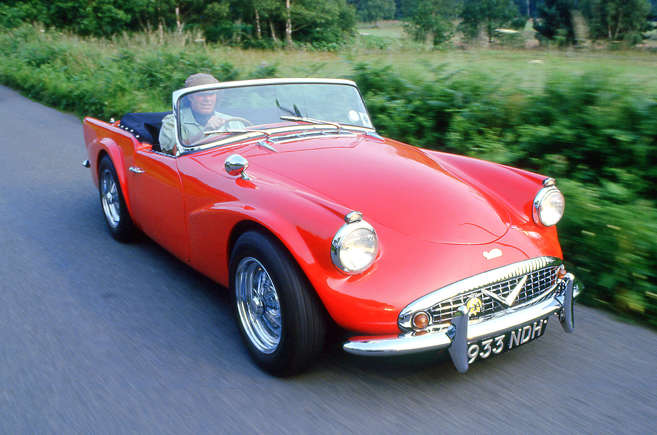
Dodge Challenger
ht years, the Dodge Challenger is determined not to go gently into that good night. Evidence of this comes in the form of the Challenger Hellcat Redeye, which comes as a street legal drag racer with 808 hp on tap from its 6.2-liter V8. It gets more than a little help from a 2.7-liter supercharger, the largest fitted to any production car.
If the Redeye sounds too overblown for your daily driving needs, Dodge will also sell you the standard Hellcat with a toned down 717bhp. Whichever you choose, you’ll enjoy the third generation of Hemi V8. It’s named after the hemispherical cylinder heads used to improve combustion, which helps explain why the Redeye can empty its 84-liter fuel tank in less than 13 minutes at full power.
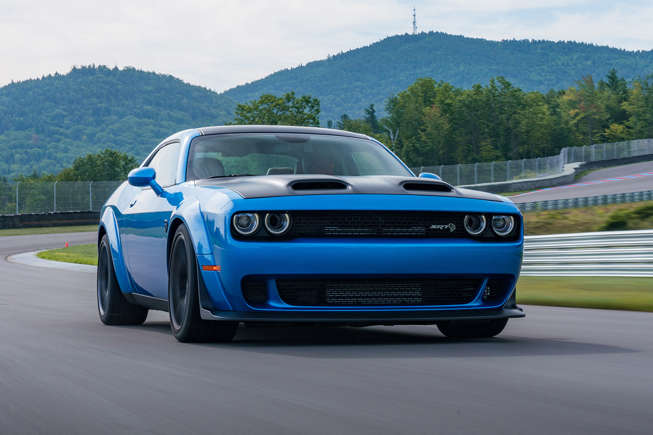
Ferrari 355
The 355 was the first Ferrari to move from ‘junior’ supercar into the full-blown senior league. Much of this was down to the 3496cc V8 engine that used five-valve-per-cylinder technology which the Italian firm was employing in its Formula 1 cars at the time. It meant the 355’s engine revved higher and harder than most other V8s, delivering 385 hp to give 0-60mph in 4.6 seconds and a 173mph top speed.
The 90-degree V8 engine was mounted longitudinally and mated to a six-speed manual gearbox as standard, though Ferrari also offered its F1 automated manual. Whichever gearbox you chose, it was the Paolo Martinelli-designed engine that made the 355 such a desirable machine, selling more than 11,000 of all body types.
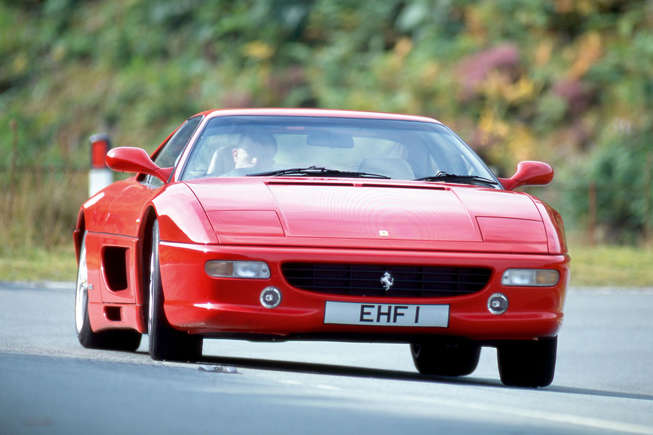
Ford Mustang
There have been Ford Mustangs for four- and six-cylinder engines, but the original pony car is always associated with a rumbling V8 motor. The latest generation of Mustang uses a 5.0-liter Coyote V8 with 469 hp, though there Shelby GT500 ups this to 760 hp from its supercharged 5.2-liter motor.
Early Mustangs from the car’s launch in 1964 came with Ford’s 260cu in (4.2-liter) small block engine. These cars are now among the most sought-after Mustangs as they were soon replaced with the 289cu in (4.7-liter) V8 that went on to power everything from pick-up trucks to the AC Cobra.
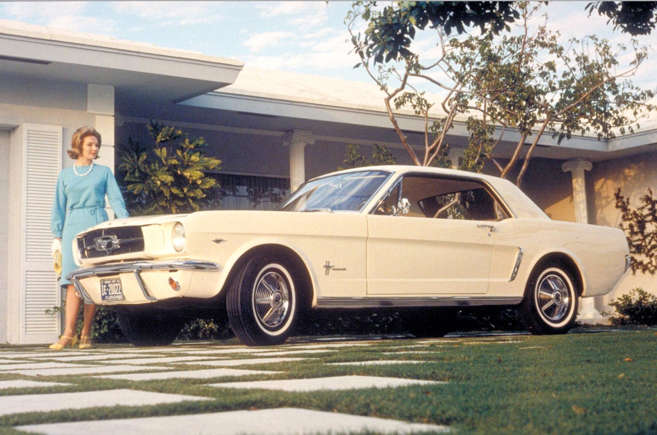
Jaguar XJR
Jaguar was no stranger to supercharging by the time its X308 generation XJR was launched in 1997. By combining forced induction with the 4.0-liter aluminium V8 motor, the British firm endowed the XJR with 375 hp and enough performance to rival the BMW M5. The 32-valve V8 could take the XJR from rest to 60mph in 5.6 seconds and on to an electronically limited 155mph.
The supercharged V8 also started a legacy that continues to this day with supercharged V8 engines used in the fastest Jaguar and Land Rover models. However, few have come close to the blend of power, pace and refinement found in this XJR.
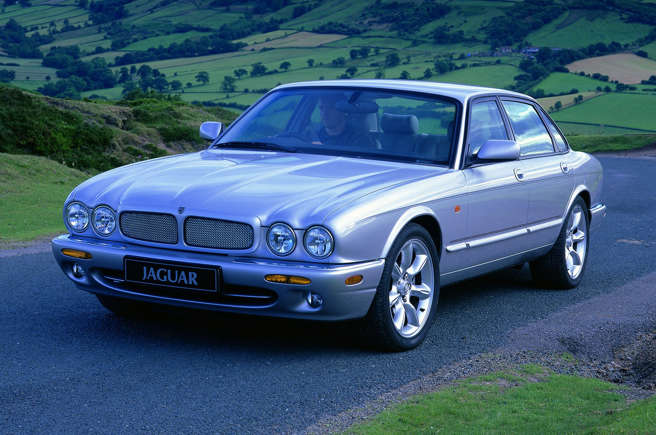
Jensen Interceptor
Jensen had already made good use of Chrysler’s V8 engine in the CV-8, but it was the Interceptor that perfectly married British good looks with American muscle. At a stroke, Jensen was part of the jet set in style and performance thanks to the 6.3-liter V8’s 330 hp and hefty 425 LB-FT of torque. It was enough to take the 3890lb (1768kg) Interceptor from a standstill to 60mph in 7.3 seconds and on to 133mph.
The optional SP model, which stood for Six Pack, had three twin-barrel carburetors and 385bhp. Jensen also offered the larger 7.2-liter V8 in the car from 1971, while the four-wheel drive FF model was added in 1968.
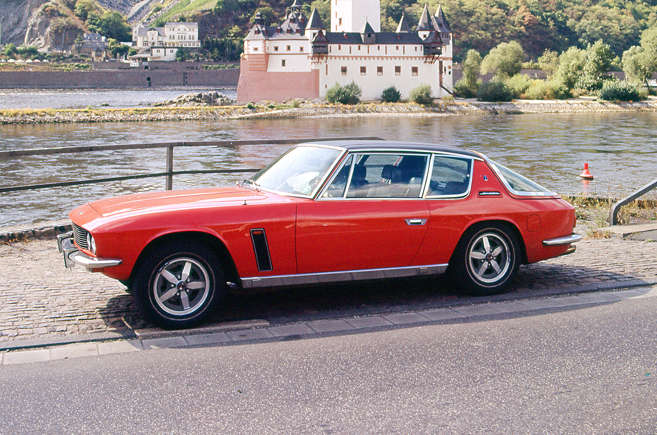
Lotus Esprit
In 1996, the Lotus Esprit finally received the engine that many thought its looks deserved: a V8. This was the Lotus Type 918 V8 with a flat-plane crank and twin Garret turbochargers. In development, the 3.5-liter V8 made 500 hp, but Lotus reined this in to 355 hp for reliability in the production models. Still, it was enough for 0-60mph in 4.8 seconds and a 175mph top speed.
Although Lotus did not increase the power of this the Esprit V8 in its lifetime, performance was improved with the stripped-out GT. Then came the Sport 350 with stiffer suspension, AP Racing brakes, and big rear wing. It offered 0-60mph in 4.3 seconds and only 48 were built.
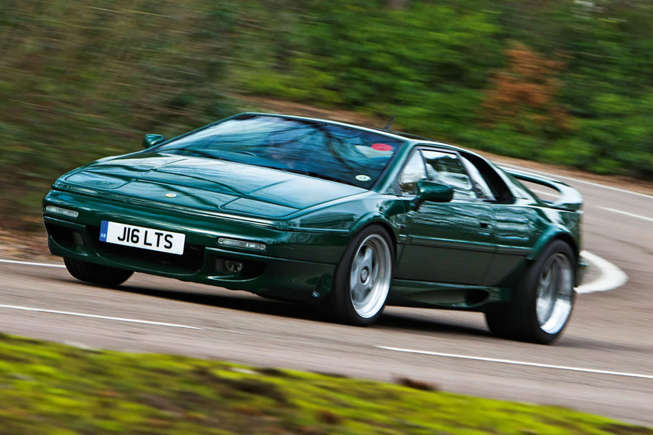
McLaren P1
The McLaren P1 arrived in a giddy storm of talk of its hybrid power and 916 hp. While the electric motor adds a healthy 179 hp to the mix, it’s the twin-turbo 3.8-liter V8 that does the bulk of the work with its 737 hp. Derived from the same engine in other McLaren cars, the 3799cc flat-plane crank V8 will rev to a peak of 8250 RPM.
Even though the P1 can drive for up to six miles on battery power alone, it’s the V8 motor that is the star of the show. It picks up revs so quickly and forces the P1 along, which is why it can cover 0-62mph in 2.8 seconds and hit 217mph flat out.
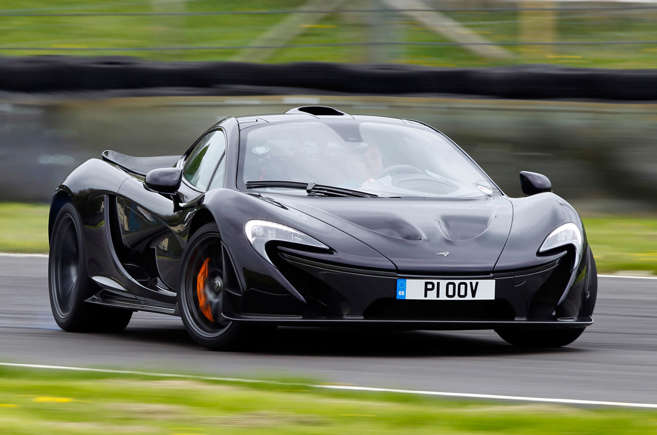
Mercedes-AMG C63
AMG’s record with potent V8s is long and distinguished, but the 2008 C63 stands out as a highlight, shoehorning in a 451bhp 6.2-liter motor to an unsuspecting C-Class. That wasn’t the end of AMG’s ambitions for this model, either, as they then offered the Performance Pack with 480bhp and then the DR520 with 520 hp.
All of this power would be pointless if the C63 wasn’t good to drive, but thankfully it scored a bullseye here. It’s nimble, agile and also capable of refined daily use, but the core of this car is always about that normally aspirated 6208cc V8 engine. Form the moment you turned the key, it let you know what the C63 was all about.
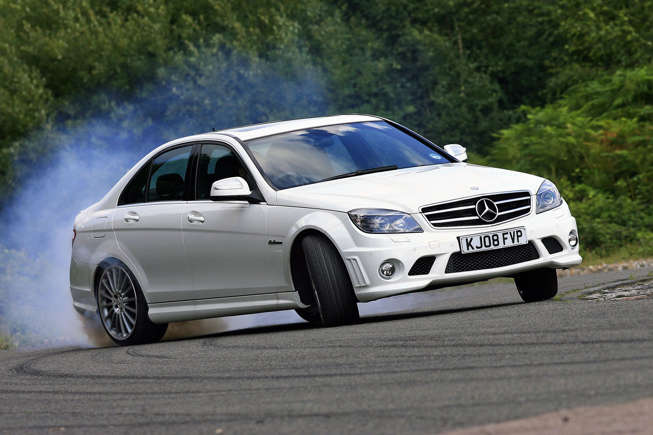
Morgan Plus 8
The Morgan Plus 8 may have looked much the same as its mild mannered Plus 4 sibling, but under the bonnet was a very different story. Here was Rover’s 3.5-liter all-aluminum V8 that gave the British sports car a 161 hp shot in the arm and meant 0-60mph in 6.7 seconds, three seconds faster than the Plus 4.
The Rover engine was ideally suited to the Morgan as it was light and compact, and it gained more power as time went on, ending up with a fuel injected 190bhp when the last Plus 8 rolled of the line in 2004. Morgan then revived the name with a BMW-sourced 4.8-liter V8 and 372 hp, giving 0-60mph in 4.5 seconds.
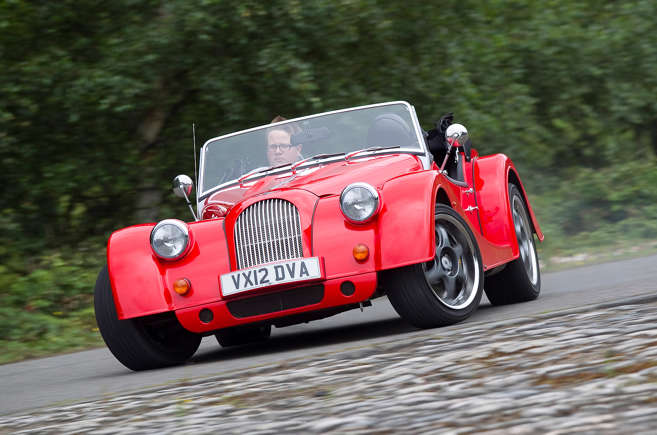
Porsche 928
The Porsche 928 could be viewed as a failure. It was intended to be the car to replace the 911, yet the classic rear-engined model outlived the 928 and is still in production today. Yet, the 928 was successful as this V8-powered super coupe offered a very different experience to buyers not interested in the rawer 911.
So much of the 928’s poise, pace and refinement came from its turbine-like V8. It started with 4.5-liters and 240bhp, but grew to 4.7 liters and 304 hp in the S. That was followed by the 314 hp S2 and 5.0-liter, 320 hp S4. Best of the lot was the GTS with a 5.4-liter version of the V8 packing 350 hp, rounding off a total production run of 61,056 928s
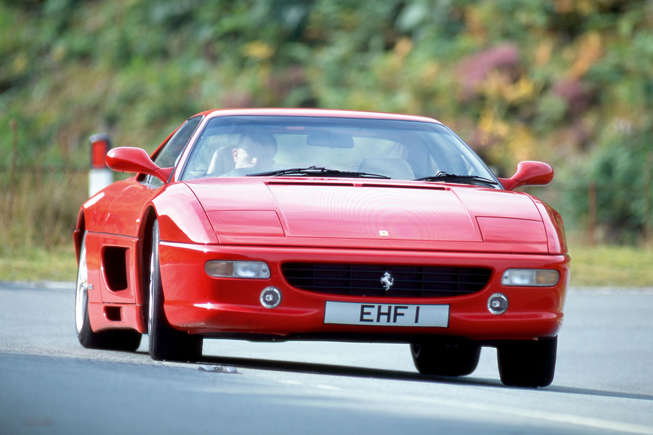
Range Rover
If ever you needed proof of the versatility of the Rover V8 engine, the Range Rover is it. The ex-Buick-designed V8 was used in the MGB GT V8, various Rover sedans and many sports cars, yet it was ideally suited to the dual-purpose Range Rover. On the road, the 137 hp 3528cc V8 could power the 4×4 along at up to 99mph in the original three-door. Off-road, 185 LB-FT of torque was more than sufficient to haul it up, over and through any terrain.
The Rover V8’s gentle woofle also endowed the Range Rover with the requisite sense of luxury this car exemplified. No wonder if lasted through till 2002 in the final P38A Range Rover with up to 228 hp in 4.5-liter form.
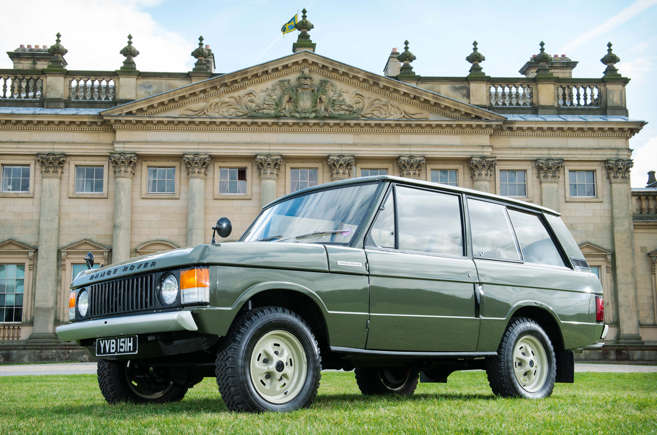
Rolls-Royce Silver Shadow
Rolls-Royce’s hushed V8 had already seen service in the Silver Cloud II and III models, but it found its perfect home in the Silver Shadow. Up until 1970, it was in 6230cc capacity but then it moved to the 6750cc size that became the standard right up to when the engine finally bowed out in 2020, as already mentioned.
During development of the engine, Rolls-Royce tested a 7269cc version of the V8, but opted for the smaller capacity to reduce stress and maintain reliability. The concern was it would not be fitting to see a Rolls-Royce broken down at the side of the road due to engine failure.
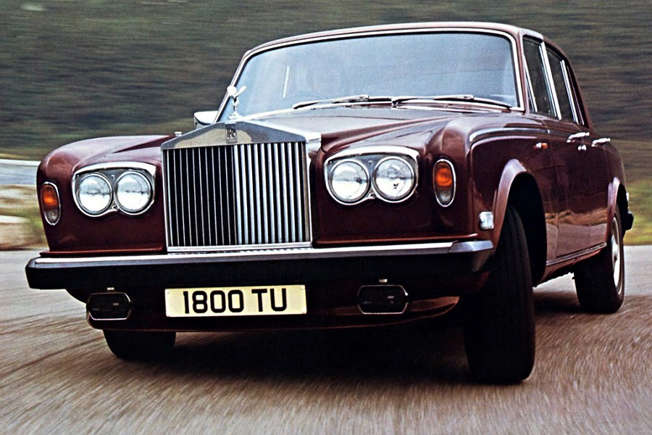
Rover P5B
The ‘B’ on the end of this Rover’s name is hugely important as it denotes the stately P5 gained the ex-Buick all-alloy 3528cc V8 engine. Not only did it transform the Rover’s performance, it elevated its image from bank manager’s car to Prime Minister’s transport, and Margaret Thatcher was famously reluctant to give up her P5B. The Queen also enjoyed driving one.
How important this new engine is evidenced by it wiping four seconds from the previous 3.0-liter six-cylinder car’s 0-60mph time. It was the right move just as Britain’s motorways were expanding fast, yet the V8 also fitted perfectly with the Rover’s hushed cabin and relaxed power in the sedan. Or you could choose the more raffish Coupe with lower roofline.
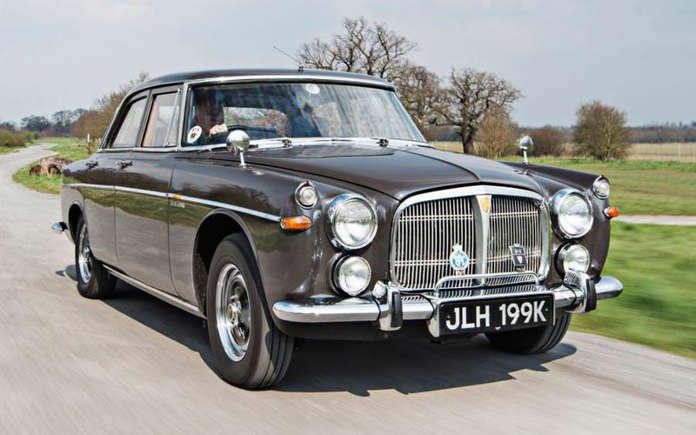
Toyota Land Cruiser
We could tell you about the gasoline V8 engines used in the Toyota Land Cruiser, but the V8 that really grabs our attention is the 4.5-liter turbodiesel. It might have produced a modest 271 hp for an engine of this size, but 479 LB-FT of torque meant it could tackle any route with complete confidence. This explains why this Land Cruiser has found favour in many of the most extreme environments in the world.
Toyota also offered a turbodiesel V8 engine earlier in the Land Cruiser’s life in the square-rigged J70 generation. This was a single turbo engine, where the later 1VD-FTV is a twin-turbo unit.
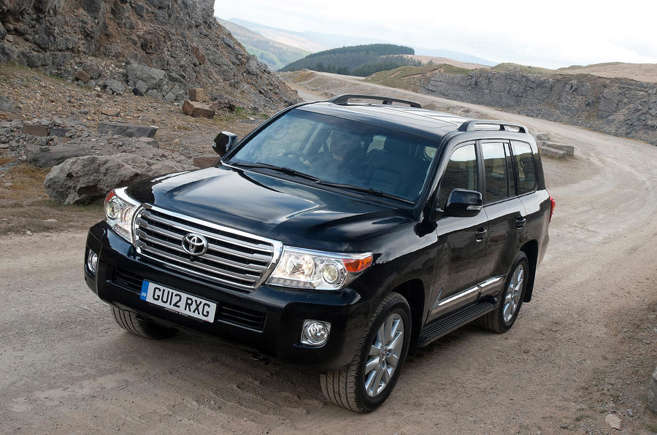
Vauxhall VXR8
Vauxhall has form of going a bit crazy now and again. The Lotus Carlton is clear evidence of this and the VXR8 is further proof. This four-door sedan was essentially a rebadged Holden HSV GTS and came with the same supercharged 6.2-liter V8 as found in the Chevrolet Camaro. It gave the Vauxhall an impressive 584 hp, and all for a lot less than the price of a BMW M5.
With a 1.9-liter Eaton supercharger offering 150bhp more than the VXR8’s predecessor, performance was always going to be vivid. From rest to 60mph took 4.8 seconds and top speed was limited to 155mph. More tellingly, the VXR8’s V8 had the power to unseat the rear tyres at almost any speed, yet it also handled brilliantly when driven with some regard to the power on tap.
